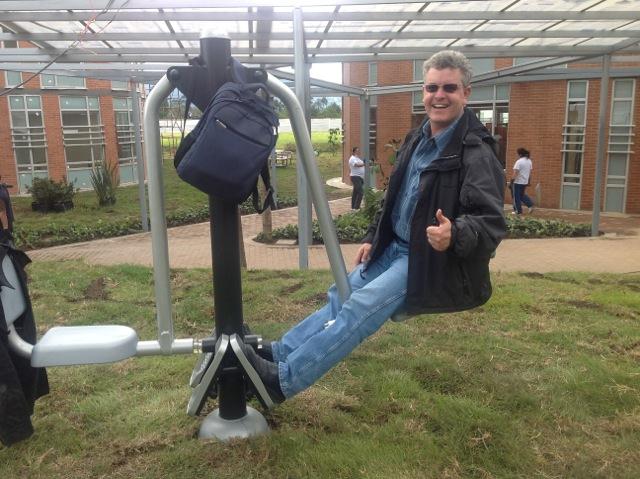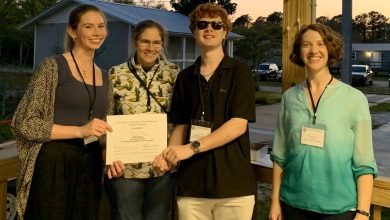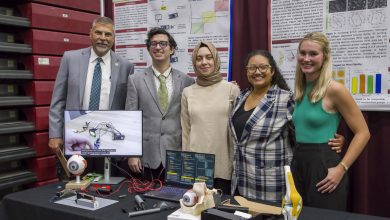LEEDing the Way in Colombia
Juan Pablo Aljure ’09 M.S.
“Our school is a living textbook for our curriculum,” said Juan Pablo Aljure ’09 M.S., headmaster of the Rochester School near Bogotá, Colombia, of the campus.
Opened last October, the new facility will be certified in August 2013 as a Green School by the United States Green Building Council. It will be the first school in Colombia to achieve the LEED (Leadership in Energy and Education Development) GOLD level.
Aljure, who has been a member of the faculty of the Rochester School since 1987, conceived the K-12 school as a model for “futuristic learning with a climate conducive to cooperation and belonging.” He refined his vision at Florida Tech in 2008–2009, when he earned his master’s degree in environmental resource management.
“Florida Tech was one of the best evaluated universities for environmental engineering and science. I preferred it to other options because of its location, versatile program, beautiful and practical geography for environmental studies and the region’s technological corridor. The weather was also nice. It was a great opportunity for my two children to develop their English skills, and it was convenient to make trips to Colombia,” he said.
Aljure took his ideas back to Colombia, became project director of the facility and led construction, which began June 2011. “We could not have implemented many of the new school’s key sustainable features if I had not done the master’s at FIT,”
he said.
The 166,841-square-foot school takes up about a quarter of the property’s acreage, where courtyards, green space and walkways abound. On the grounds is an audeteria (auditorium/cafeteria) featuring 12 arts classrooms, chapel, cafeteria that seats 384, snack bar and a professional theater for 600 spectators.
Among its energy efficiencies, solar collectors and electric pumps heat two swimming pools and dressing rooms, making possible year-round swimming classes. The 20-KW-powered solar photovoltaic arrays atop the middle and high schools provide an energy source that meets 12 percent of the electricity demands of the campus, including automatically controlled LED lighting. The school also incorporates natural diffused lighting.
Tertiary treated wastewater is recycled for toilets and irrigation, removing 35 percent of the former drain on potable water.
The school’s many sustainable features are subjects of study for teachers and students. They “are coming to understand that renewable practices can be implemented and are here to stay,” said Aljure.
He is perhaps most proud of the pedagogical classroom hubs. These extended learning areas surrounded by four or five classrooms, offer a common space where teachers of the same grade level or discipline can team-teach. Flexible, they also create spaces for students and teachers to come together in interest groups and facilitate novel teaching strategies.
“Our students will become adults and citizens of the world with a mental model that is needed now and in the future. We hope that other schools in Colombia can study us to implement their own sustainable facilities and the government of Colombia can look at our project to use what we have done here as a basis for future policy decisions.”
Aljure’s next step is to manage his project. His immediate goal is to pay back the school’s debt.
“All these systems must work as designed to create the real savings to pay off the debt and to provide real data for the curriculum for others to study. This is the management phase where we become a living textbook.”
Story by Karen Rhine





